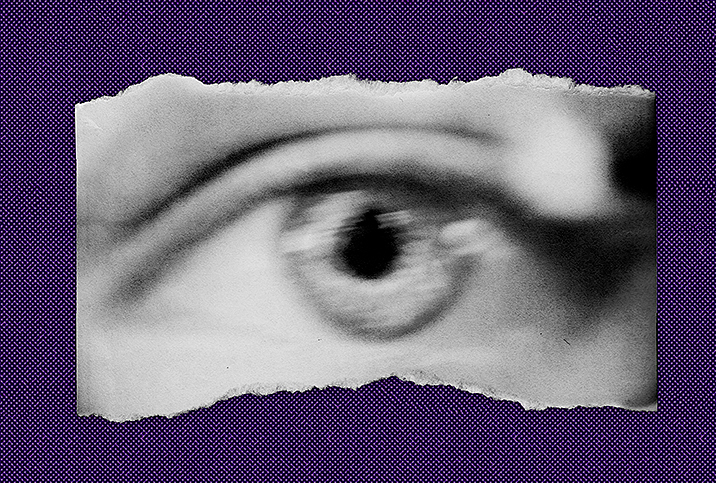Complex PTSD Requires Complex Solutions

Complex post-traumatic stress disorder (CPTSD), sometimes referred to as "complex trauma," is often mistaken as post-traumatic stress disorder (PTSD). But the two conditions differ in critical ways.
Post-traumatic stress disorder occurs in some people who have experienced a traumatic event, such as a terrorist act, rape or robbery; been threatened with violence or death; or witnessed such events closely. The disorder mostly correlates to a single incident.
Complex post-traumatic stress disorder, on the other hand, develops as a result of prolonged or repetitive exposure to a series of traumatic events over time. The term CPTSD is used interchangeably with complex relational trauma, interpersonal trauma and developmental trauma.
Complex PTSD can contain all the core symptoms of post-traumatic stress disorder—such as reliving the trauma, feelings of being unsafe and threat avoidance—but these terms are not interchangeable.
Recognizing the trauma
The distinction is important when trying to recognize and treat CPTSD.
"Even mental health professionals can be trained in trauma treatment but then run into problems because they don't understand the nervous system nuances present in complex PTSD,'' said Colleen Bethel, M.S.W., a Minneapolis therapist who is certified in eye movement desensitization and reprocessing (EMDR) therapy.
Not fully understanding the difference between the two disorders can lead to ineffective or even harmful treatment.
"If complex trauma only impacts the left brain, then you can think your way out of your problems for sure, but trauma affects the whole brain, and the whole brain includes your body, your emotions, disturbing images, memories, and we can't think our way out of that. We have to include our body," Bethel explained.
In other words, you can't always think your way out of a nervous system injury, which is often why talk therapy falls short for trauma patients. This is because in complex trauma cases, repetitive traumatic events have affected the patient's perceived sense of self and environment. The symptoms manifest as deep-rooted self-worthlessness, feelings of shame and guilt, emotional flashbacks, difficulty regulating emotions, dissociation, concentration problems, suicidal thoughts, physical symptoms, and risky or destructive behaviors, such as drug abuse or self-harm. The trauma survivor may also have trouble with connecting with people and maintaining relationships.
Complex post-traumatic stress disorder most often happens in people who experienced childhood trauma. However, it can develop in adulthood during exceptional circumstances, where the sense of self is broken down through repeated loss of control and abuse. Common roots of CPTSD include dysfunctional family systems, prolonged domestic violence, emotional neglect, multiple incidents of childhood physical or sexual abuse, concentration camp experiences, torture, human trafficking, slavery and being present in a war zone.
From child to parent
Justine Chatterton, Ph.D., a licensed psychologist based in St. Paul, Minnesota, elaborated on how severe trauma during childhood can interrupt the course of an individual's psychological and neurological development later in life.
"I think developmental trauma has to be there for complex trauma to develop; development trauma being that in an environment in which we're developing, we are not allowed to develop our whole selves," Chatterton said. "Then often later in life, people have a big event trauma, an assault or bullying, and you haven't developed properly and have cut off parts of yourself, and this traumatic thing happens and you don't have your full self or support or safety in relationships around you. Then complex trauma develops."
This can even occur in the case of pregnancy, postpartum emotions and parenthood.
"We have all this developmental trauma from the way we were parented and then become a parent and that's where the complexity shows," Chatterton continued, adding the example, "'I want to raise a child that doesn't have the same issues I have, but it's too confusing to access those parts.'"
An example she has seen often is someone socialized and raised as a woman being taught to not be "too much" or told their emotions are "too big." It may affect their relationship with their child and they may even start to look at their child's emotions as being too big or too much without realizing their own projection.
Strategies to cope, healthy and unhealthy
Some trauma survivors may still be dependent on their abusers, isolated and disconnected from their sense of emotional self and their body without being aware of it. Dissociation is also a survival strategy.
"People with CPTSD have all kinds of coping strategies and ways to stabilize their life, but what happens is that sometimes inside they are disconnected and they have developed a way that they ignore the material that is traumatic: the abandonment, the loneliness, the sadness," Bethel explained. "All the vulnerable stuff will be stuffed down there and they will be fantastic in their life. [They] will be really strong workers and maybe at the top of their life, but they are abandoning themselves and their emotional lives inside. That's how they made it through."
With trauma pushed down deep, it may later emerge through the body, an experience Chatterton described as visceral.
"Complex trauma can live inside the body and shows up as just a sensation rather than an image," she said. "In complex trauma, a flashback is more of a sense of something. It can really be like, 'I don't want to go into that crowded social situation and I don't know why' or 'I don't want to take this work position and I don't really understand why.' There is a vague and diffused sense of unsafety and uncertainty."
Our body's ability to know and sense things without hearing or seeing them can sometimes be ascribed to intuition, but can also be buried trauma flaring up. It might take time to understand what doesn't feel right and why.
Sometimes the flashback can become panic, where you may go into a prolonged "freeze state" to protect yourself. This state can present as a sense of depression and/or hopelessness, withdrawal, feeling suicidal or lethargy. Other times, flashback experiences can result in dissociation: If the body subconsciously picks up on trauma cues it can't tolerate, the patient disconnects from the body itself.
CPTSD patients can be easily triggered by stimuli they can't necessarily identify. Bethel said it's important for a practitioner to pace their sessions carefully.
"People can be disconnected from any evidence that they have trauma," Bethel said. "That's how protective our brains and nervous systems can be...And so we have no evidence to control any other solution other than 'I am just a broken person.' If we don't have a 'trauma lens' that we can see through, the patient will start to blame themselves."
Bethel pulled an example from her own practice, which uses EMDR therapy.
"If I work with a veteran, for example, who has come from a family [where] they felt like they belonged and they felt safe, they felt guided but they went to war, those [are] people who have a lot of internal resources," Bethel said. "They were loved, they were comforted, and somebody did protect them, so [when] we are doing EMDR, they are simultaneously drawing on their resources while we are there. However, with complex PTSD, we need to develop and build those internal resources first to move forward."
These internal resources are what help us stay in our window of tolerance, regulate our emotions and be present for our emotional selves. If you've been through a childhood where you weren't protected, didn't feel like you belonged or didn't have an adult or support system that was consistently there to help you, you will develop different survival strategies because you may not have the resources to be compassionate to yourself.
"One of the survival strategies is taking all the blame," Bethel said. "So you end growing up really believing you are the problem person instead of having problems. This survival strategy allows for children to believe that it's all their fault and it is empowering. It gives them hope that they can fix things, that they can get better, that [they] know they'll get through it. But in adulthood, it ends up like, 'Something is wrong with me, I am a failure, I am not good enough. If I just change my thinking, I'll get better.'"
Since people think being hard on themselves ensured their survival in childhood, they try the same strategy as they grow older.
"This then becomes shame and is so intolerable it makes us lack curiosity," she added. "We can't talk about the thing we just felt and the shame overwhelms us and we can't be curious, don't want to tell anybody what we went through, we can't connect. But when we think about traumatized people, connecting [to] people and opening up and telling secrets and revealing their struggles, it's historically dangerous and they get abandoned, so shame will prevent the abandonment. If you never take a chance, you'll never hurt again. If I'm never curious, I will never get hurt again...That's a real common thing that traumatized people have to decide all the time as they try not to fall into a flashback."
Our inner critic
The inner critic is a manifestation of shame. However, Chatterton said this voice is there "to ensure survival through shame and guilt by connecting us to people in controlling mechanisms to ensure that they won't get abandoned. This inner critic ensures that the only way to be accepted and cared for is to cut off parts of yourself."
Therapy for complex post-traumatic stress disorder often starts with exploring the inner critic, learning to be compassionate toward it and understanding where it came from. However, therapy is just one of many tools. Healing comes through relationships, inside and outside the therapy room, in the form of community, family and friends.
"The healing has to be relational for people to develop new networks for the nervous system, to build and recognize a safe environment," Chatterton explained. "All our changes are going to be close to home, building safe, close relationships with yourself. And then that leads us to make more changes in our life, such as a work environment that feels conducive. There also needs to be changes made in big macro structures, like racism, capitalism and a toxic stress environment...So outside therapy, the change has to be relational and environmental."




















